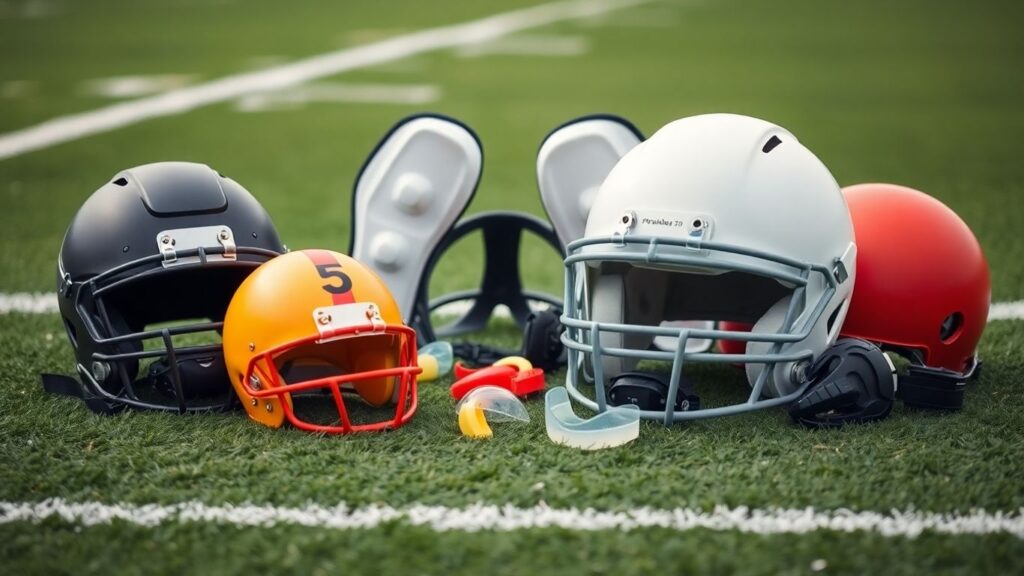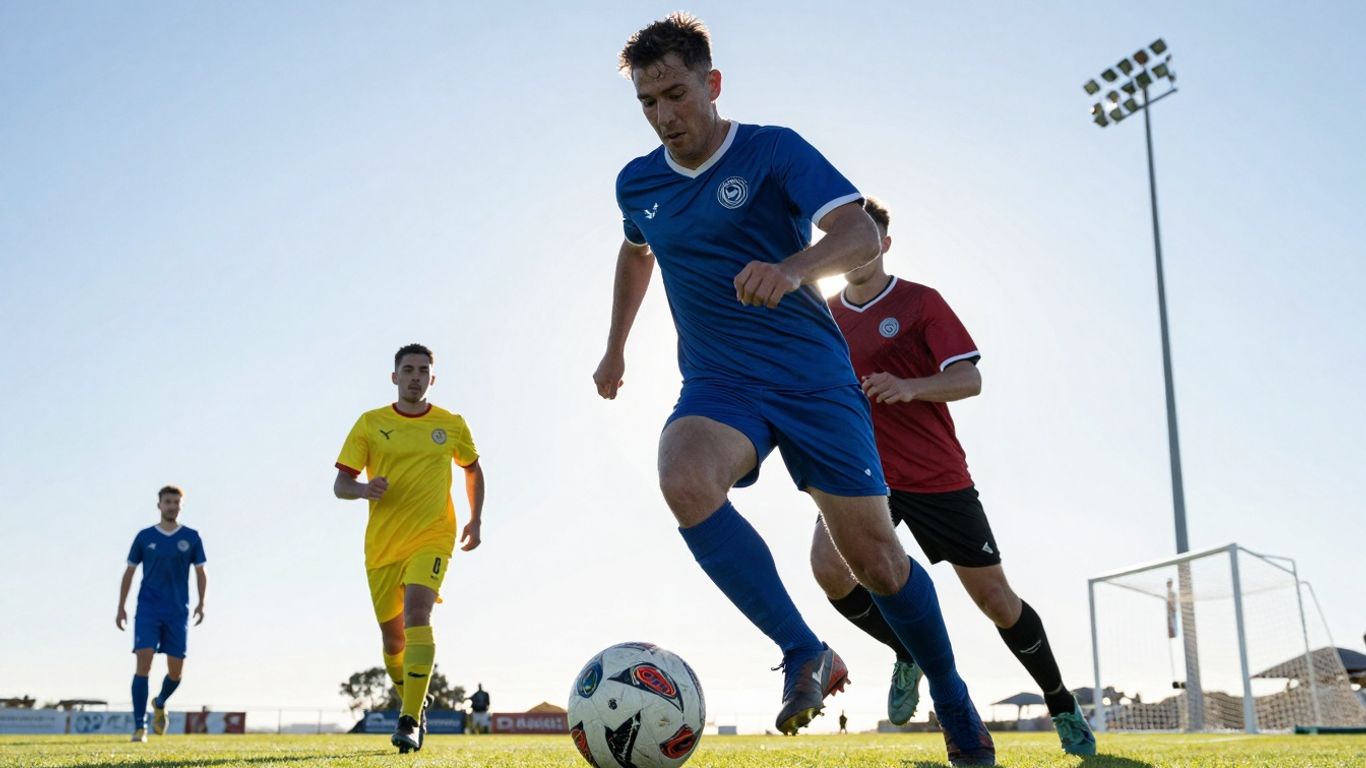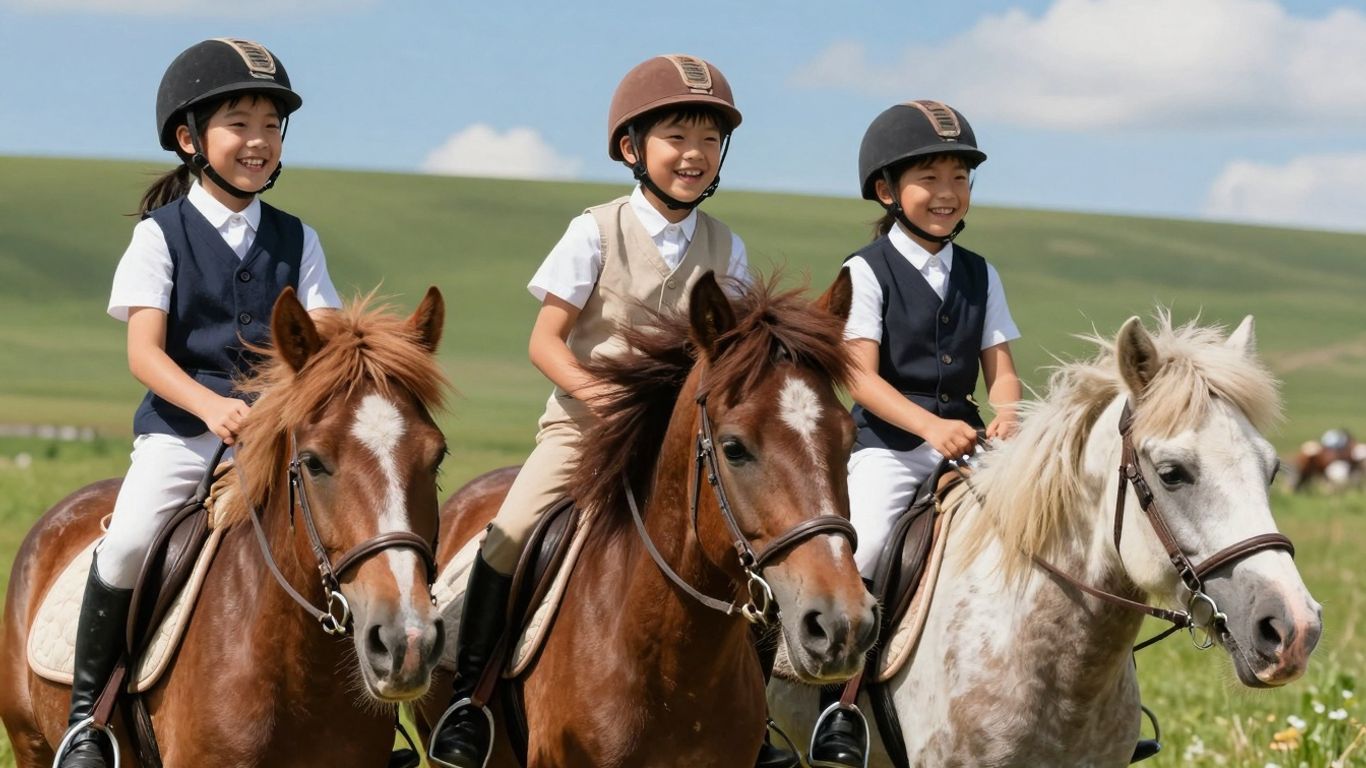Getting out there and having a go at your favourite sport is brilliant fun, isn’t it? Whether you’re kicking a ball around, hitting the slopes, or just having a casual bike ride, staying safe is a big part of the game. You don’t want a silly accident to put you out of action. That’s where having the right safety gear for sports comes in. It might not always look like the latest fashion, but this gear is your first line of defence against bumps, bruises, and worse. Let’s have a look at what you should be thinking about to keep yourself protected.
Key Takeaways
- Helmets are a must for sports with a high risk of head impacts, like football or cycling, and need to fit properly to work best.
- Eye protection, like sports goggles or face shields, can stop over 90% of eye injuries, so always wear them when playing.
- Mouthguards protect your teeth, tongue, and jaw, and are recommended for most contact sports to avoid dental damage.
- Pads and guards for your wrists, knees, elbows, and even groin protection are important in contact sports and activities with a risk of falls.
- The right footwear, whether it’s cleats for the field or specialised shoes for courts, provides grip and support, helping to prevent slips and strains.
Protecting Your Head: The Importance Of Helmets
Alright, let’s talk about helmets. If you’re playing any sport where your head might take a knock – and let’s be honest, that’s a fair few of them – then a helmet isn’t just a good idea, it’s pretty much non-negotiable. We’re talking about everything from Aussie Rules and rugby to cycling, skateboarding, and even horse riding. These things are designed to absorb some serious impact, potentially saving you from nasty injuries. Wearing a helmet designed for your specific sport can slash your risk of head injuries by a massive 75% to 85%. That’s a huge difference.
Helmets For High-Risk Sports
Some sports just naturally come with a higher chance of head impacts. Think about footy, where tackles can get pretty intense, or hockey with its fast-moving pucks and sticks. Even sports like baseball, where a wild pitch or a fast-hit ball can come your way unexpectedly, require solid head protection. For these activities, a helmet isn’t optional; it’s part of the uniform. It’s about being prepared for the unexpected and giving your brain the best chance it can get if something goes wrong.
Choosing The Right Helmet
So, you need a helmet, but which one? First off, make sure it’s made for the sport you’re playing. A bike helmet isn’t going to cut it for a game of rugby, and vice versa. Look for certification stickers – these tell you the helmet meets safety standards. For cycling, you’ll want to see a CPSC sticker. For football, it’s usually NOCSAE. It’s a bit like checking the expiry date on milk; you want to know it’s good to go. Also, consider multi-sport helmets, but always double-check they meet the standards for all the activities you plan to use them for.
Proper Helmet Fit And Maintenance
This is where a lot of people fall down. A helmet that doesn’t fit properly is about as useful as a chocolate teapot. You want it snug, but not so tight it gives you a headache. It should sit level on your head, not tilted back or forward, and definitely shouldn’t be sliding around when you move. The straps should form a ‘V’ shape around your ears, and that buckle needs to be fastened every single time. Think of it like a seatbelt – it only works if it’s done up. And remember, if your helmet has been in a crash, even if you can’t see any damage, it’s time to replace it. The protective foam inside can be compromised without any visible signs.
Helmets are brilliant at reducing the severity of impacts and preventing skull fractures, but it’s important to know they don’t completely prevent concussions. While they lessen the force, a strong enough hit can still cause your brain to move around inside your skull. So, while wearing a helmet is a massive step in the right direction, it’s not a magic shield against all head injuries.
Safeguarding Your Sight: Essential Eye Protection
Preventing Sports-Related Eye Injuries
It’s pretty wild to think about, but a huge chunk of eye injuries happen because people are playing sports. Seriously, it’s the main reason teens end up with eye trouble. But here’s the good news: wearing the right protective eyewear can slash the risk of a serious injury by a massive 90%. That’s a pretty compelling reason to get kitted out properly, wouldn’t you say?
Types Of Protective Eyewear
When you’re looking for eye protection, you want stuff made from polycarbonate or Trivex. These materials are tough and designed specifically for sports. You’ll see different types depending on the game:
- Helmets with face guards: Think football, ice hockey, and lacrosse. These are basically shields that attach to your helmet to keep your face and eyes safe from stray pucks or sticks.
- Goggles: These are your go-to for sports like basketball, soccer, racquet sports, and even street hockey. They wrap around your eyes for a snug fit.
- Sports-specific glasses: If you already wear glasses, don’t just use your regular ones. You’ll need prescription polycarbonate glasses or goggles designed for sports. Contact lenses? They don’t offer any protection on their own, so keep that in mind.
- Wraparound shades: For sports where you’re out in the sun, like cycling or water sports, you might want tinted polycarbonate shades. They can also help block out annoying bugs or dust.
Ensuring A Secure Fit For Eye Protection
Getting the right fit is super important. Your eye protection should feel snug but not uncomfortable. Look for padding, especially above your eyebrows and over your nose. This cushioning helps absorb impact and stops the gear from digging in. It should stay put, even when you’re moving around a lot. If your gear is damaged, or if plastic parts start to look a bit yellow and old, it’s time to swap it out for a new set. Always check that your eye protection meets the relevant safety standards, like those set by ASTM (American Society for Testing and Materials).
Don’t skimp on eye protection. It might seem like a hassle, but a few minutes spent choosing and fitting the right gear can save you a lifetime of vision problems. It’s a small price to pay for keeping your sight intact.
Dental Defence: Understanding Mouth Guards
Right, let’s talk about mouth guards. You might think they’re just for the serious boxers or rugby players, but honestly, if there’s any chance your mouth could take a knock, you should be thinking about one. It’s not just about avoiding a chipped tooth, though that’s a big part of it. We’re talking about protecting your gums, your jaw, and even potentially reducing the severity of some impacts to the head.
Why Mouth Guards Are Crucial
Look, sports are great, but they can get rough. A stray elbow, a fast-moving ball, or even just a clumsy fall can lead to some pretty nasty dental injuries. We’re not just talking about a bit of pain; we’re talking about expensive dental work, long recovery times, and potentially permanent damage. Mouth guards act like a shock absorber for your mouth. They spread the force of an impact, stopping it from concentrating on a single tooth or your jawbone. While there’s no solid proof they stop concussions, the evidence is pretty clear that they significantly cut down on dental injuries. It’s a simple piece of gear that makes a massive difference.
The biggest hurdle with mouth guards is getting people to actually wear them. If it’s uncomfortable, hard to breathe with, or makes it impossible to talk, athletes will just leave it in their bag. That’s why getting the right fit and type is so important.
Choosing And Maintaining Your Mouth Guard
So, you’ve decided to get a mouth guard. Good on ya! Now, what kind do you get? There are a few options:
- Stock Mouth Guards: These are the cheapest and easiest to find, usually in sports stores. They’re pre-formed, kind of like a horseshoe. The downside is they don’t fit very well, can be bulky, and might fall out easily. Not ideal for serious protection.
- Boil-and-Bite Mouth Guards: These are a step up. You buy them, pop them in hot water for a bit, then bite down to mould them to your teeth. They offer a much better fit than stock ones and are still pretty affordable. Lots of teams just buy these in bulk for everyone.
- Custom-Made Mouth Guards: These are the top-tier option. A dentist or dental technician makes a mould of your mouth and creates a guard specifically for you. They offer the best fit, comfort, and protection. If you’re playing a high-contact sport regularly, this is probably the way to go.
Once you’ve got your mouth guard, looking after it is key. Always rinse it with cool water after use and store it in a ventilated case. Don’t leave it lying around in your sports bag where it can get all grubby or damaged. If it starts to look worn out, feels loose, or is damaged, it’s time to get a new one. Your teeth will thank you for it.
Shielding Your Extremities: Pads And Guards

When you’re out there playing sports, it’s not just your head and eyes you need to worry about. Your arms, legs, and even your bits down below can take a fair whack. That’s where pads and guards come in. They’re like your personal bodyguards on the field, taking the hits so you don’t have to.
Protecting Wrists, Knees, And Elbows
These are the bits that often go out first when you have a tumble. Think about it – when you fall, your instinct is to put your hands out, right? That’s why wrist guards are a lifesaver, especially for sports like skateboarding, inline skating, or even snowboarding. They can stop nasty wrist fractures. Knee pads are pretty obvious; they cushion your knees from scrapes and impacts, which is handy for volleyball, basketball, or any sport where you might hit the deck. Elbow pads do a similar job for your elbows, saving you from painful bruises and breaks.
- Wrist Guards: Great for sports with a high chance of falling, like skating or snowboarding.
- Knee Pads: A must for sports involving dives or frequent falls, such as volleyball or netball.
- Elbow Pads: Useful for sports with a lot of arm movement or potential for impact, like hockey or even some martial arts.
Essential Pads For Contact Sports
If you’re playing something like rugby, American football, or even hockey, you’re going to need more serious padding. These sports involve direct collisions, so you need gear that can handle it. We’re talking about thigh pads to protect your quads from heavy knocks, hip pads for those awkward falls, and shoulder pads that are designed to absorb the shock of tackles. The type of shoulder pad can even vary depending on your position – a lineman might need more robust padding than a quarterback.
The materials used in these pads are pretty clever. You’ve got foams that soak up impact, gels that cushion bony areas, and tough plastics that can take a beating. It’s all about spreading the force of a hit so it doesn’t all land on one spot.
Groin Protection For Male Athletes
For blokes playing sports like hockey, football, soccer, or even basketball, a protective cup is a pretty sensible idea. It might not be the most comfortable thing in the world, but it offers vital protection for the groin area against stray balls, kicks, or accidental collisions. It’s a small piece of gear that can prevent a lot of pain and potential long-term issues. If you’re in a sport that involves running but isn’t high-contact, an athletic supporter can still offer some basic support.
Footwear Fundamentals For Sports Safety
Cleats and Athletic Shoes for Field Sports
When you’re out on the field, whether it’s for a game of footy, baseball, or soccer, the right footwear makes a massive difference. We’re talking about cleats here – those shoes with the little nubs on the bottom. They’re not just for show; they give you the grip you need to change direction quickly, stop on a dime, and generally not slip all over the place. Without them, you’re basically asking for trouble, especially on grass or dirt.
Specialised Footwear for Cycling and Court Sports
It’s not just field sports that need special shoes. If you’re a cyclist, you’ll want cycling shoes. These often have stiff soles that help you push down harder when you pedal, making your ride more efficient. Plus, they usually clip into the pedals, so your foot doesn’t slip off. For sports played on courts, like basketball or tennis, you need shoes that offer good support and traction. Think about basketball players jumping and landing – they need shoes that cushion their feet and stop them from sliding around. Tennis players need shoes that can handle quick side-to-side movements without twisting your ankle.
Replacing Worn-Out Sports Shoes
This is a big one that a lot of people forget. Your trusty old runners or footy boots might feel comfortable, but if the tread is worn down or the cushioning is flat, they’re not doing their job anymore. Worn-out shoes can lead to all sorts of problems, from blisters and sore feet to more serious injuries like shin splints or even ankle sprains. It’s a good idea to check your sports shoes regularly and replace them when they start showing signs of wear and tear.
Don’t underestimate the power of good shoes. They’re your connection to the ground, and if that connection is weak, you’re more likely to get hurt. Think about how much you rely on your feet for stability and movement – keeping them protected with the right footwear is just common sense.
Face And Ear Protection In Sports

Face Guards to Prevent Facial Injuries
When you’re out there playing, especially in sports where things move fast and bodies collide, protecting your face is a big deal. Think about sports like Aussie Rules football, rugby, or even some forms of indoor soccer. A stray elbow, a fast-moving ball, or even just a tumble can lead to nasty cuts, broken noses, or worse. That’s where face guards come in. They’re usually attached to your helmet and act like a shield, keeping those high-impact projectiles and accidental bumps away from your face. For sports like ice hockey, wearing a face shield has been shown to really cut down on the number and seriousness of facial injuries. It’s not just about looking tough; it’s about keeping your mug in one piece so you can keep playing and, you know, recognise your mates afterwards.
- Types of Face Protection:
- Full-face shields: These often attach to helmets and cover the entire face, common in sports like ice hockey and lacrosse.
- Visors: These are typically clear shields that attach to the helmet and protect the eyes and upper face.
- Grill-style guards: These offer protection while allowing for better visibility and airflow, often seen in football.
Remember, even with a face guard, it’s still possible to get hurt. They’re designed to reduce the risk, not eliminate it entirely. Always make sure your gear is properly fitted and certified for your sport.
Ear Protection for High-Impact Sports
Ever heard of ‘cauliflower ear’? It’s not a new type of veggie, but a real injury that can happen to your ears, especially in sports like wrestling, boxing, or water polo. It’s basically swelling and damage from repeated blows or friction. While it might sound minor, it can lead to permanent changes in your ear’s shape and even hearing issues. Proper ear protection, often built into helmets or as separate ear guards, can help prevent this. It’s about cushioning those delicate parts of your head from direct hits and the general rough-and-tumble of intense sports. Keeping your ears safe means you can keep hearing your coach’s instructions and all the cheers from the sidelines.
- When to Consider Ear Protection:
- Wrestling and martial arts, due to grappling and potential headlocks.
- Boxing, for protection against direct blows.
- Water polo, where headbutting and close physical contact are common.
- Any sport with a high risk of direct head impacts or collisions.
So, What’s the Takeaway?
Look, nobody wants to get hurt while having a bit of fun, right? That’s why all this gear we’ve talked about – the helmets, the guards, the eyewear – it’s not just for show. It genuinely makes a massive difference in keeping you on the field and out of the physio’s office. It might seem like a hassle sometimes, or maybe not the coolest thing to wear, but trust me, your future self will thank you. Make sure your gear fits right and is in good nick, and you’ll be able to enjoy your sport way more, with a lot less worry about taking a nasty knock.
Frequently Asked Questions
Why is wearing a helmet so important, even if my sport doesn’t seem super dangerous?
Helmets are like a superhero shield for your head! Even in sports that aren’t full-on contact, there’s always a chance of falling or getting hit. A helmet can stop a minor bump from becoming a serious head injury, keeping your brain safe and sound for all the fun you want to have.
Can I just wear my regular glasses or sunglasses for eye protection during sports?
Nah, mate, regular glasses aren’t tough enough for sports. They can shatter and cause more harm. You really need special sports glasses made from strong stuff like polycarbonate. They’re built tough to handle impacts and keep your eyes from getting hurt by balls, elbows, or anything else flying around.
Do I really need a mouthguard if my sport isn’t a contact sport?
Even in sports that aren’t all about tackling, you can still get hit in the mouth. A mouthguard acts like a cushion for your teeth and jaw, stopping them from getting chipped or broken. It can also help prevent nasty cuts to your tongue and lips.
What’s the deal with all the different pads and guards? Which ones do I need?
Think of pads and guards as your personal armour! They protect your bits and pieces that are more likely to get bumped or scraped. For sports with lots of falling, like skateboarding or rollerblading, you’ll want wrist, elbow, and knee guards. If you’re playing rougher sports, you might need shin guards, shoulder pads, or even a chest protector.
Why are specific shoes important for different sports?
Your shoes are your foundation on the field or court! Different sports need different shoes to keep you stable and prevent injuries. Cleats give you grip on grass, while court shoes offer support for quick moves. Wearing the wrong shoes is like trying to run a race in thongs – you’re asking for trouble!
How often should I check or replace my sports safety gear?
Your safety gear isn’t meant to last forever. You should check it regularly for any cracks, tears, or signs of wear and tear. If your helmet has been in a crash, or your pads look a bit sad, it’s time for a new set. Gear that’s damaged or worn out just won’t protect you properly.





